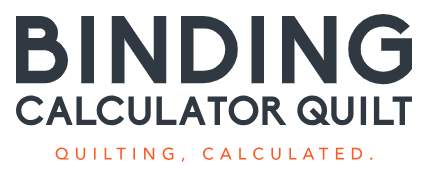Quilt Block Layout Calculator
Determine how many blocks you need to create a quilt of your desired size.
Quilt Block Layout Calculator
Desired Quilt Size (Finished)
Block Size (Finished)
Sashing (Optional)
Borders (Optional)
Planning Your Quilt Block Layout
Why Block Layout Matters
Planning your block layout before you start sewing saves time, fabric, and frustration. Knowing exactly how many blocks you need ensures your quilt will be the size you want, and helps you purchase the right amount of fabric from the start.
Choosing Your Block Size
Common finished block sizes include 6", 8", 10", 12", 14", and 16". Larger blocks mean fewer blocks to piece, making your project faster. Smaller blocks create more intricate designs but require more piecing work.
Quick Guide:
- 6-8" blocks: Baby quilts, wall hangings, detailed patterns
- 10-12" blocks: Lap quilts, twin/queen quilts, most popular size
- 14-16" blocks: King quilts, quick projects, bold designs
Working with Sashing
Sashing is the fabric strips that separate blocks in a quilt. It serves both practical and aesthetic purposes:
- Helps reach a specific size: Add sashing to make your quilt larger without making more blocks
- Frames individual blocks: Particularly important for showcasing complex block patterns
- Simplifies construction: Can make it easier to piece blocks together accurately
- Adds design interest: Creates structure and visual pathways through the quilt
Common sashing widths range from 1.5" to 3", with 2" and 2.5" being most popular.
Understanding Cornerstones
Cornerstones (also called posts or setting squares) are small squares placed where sashing strips intersect. They add visual interest and can simplify construction by allowing you to piece sashing strips separately rather than in long continuous lengths.
Cornerstones are typically the same width as your sashing. Use a contrasting fabric to create a distinctive grid pattern across your quilt.
Borders and Final Sizing
Borders frame your quilt and help you reach your desired finished size. When planning your layout, remember that borders are added after the blocks and sashing, so they need to be accounted for in your calculations.
This calculator subtracts your border widths from your desired quilt size to determine how many blocks will fit in the center area. This ensures your final quilt, with borders, will be the size you want.
What If Blocks Don't Fit Perfectly?
It's rare for blocks to fit exactly into a desired quilt size. Here are your options:
- Accept the difference: A few inches difference is often fine
- Adjust sashing width: Wider or narrower sashing can help you reach your target size
- Add wider borders: Use borders to make up the difference
- Try a different block size: Experiment with the calculator to find a better fit
- Change your target size: Adjust to the nearest size that works well with your blocks
Pro Tips for Block Layout
- • Always make 1-2 extra blocks in case of mistakes or future repairs
- • Sketch your layout on graph paper before cutting fabric
- • Consider how your block pattern will look when repeated across the quilt
- • Take photos of your blocks laid out before sewing to ensure you like the arrangement
- • Remember that standard quilt sizes (twin, queen, king) can serve as good starting points
